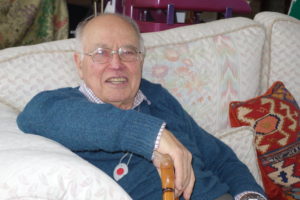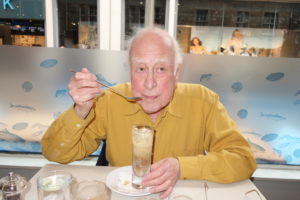Masters of Edinburgh
As part of his research for his next book, Graham spent last Friday in Edinburgh talking with the Fields-Medal winning mathematician Sir Michael Atiyah and the Nobel-winning physicist Sir Peter Higgs.
They both spoke at length about the development of their subjects in the 1960s and 70s, as well as their views of how mathematical physics has developed during their careers. ‘These were terrifically valuable testimonies’, Graham said: ‘It’s astonishing how differently leading physicists and mathematicians view the progress of theoretical physics over the past five decades.’

This was Graham’s second conversation with Michael Atiyah, who has become increasingly interested in applying cutting-edge mathematics to fundamental physics. ‘I spent the first half of my career as a pure mathematician, the second half becoming a quasi-physicist’, he said. For almost two hours, Atiyah reflected on how he first became interested in applying the famous Atiyah-Singer theorem, his first meeting with the prodigiously talented Edward Witten, and the gradual coming together of physics and mathematics in the 1970s. After looking over some of his early work recently, he concluded ‘I was much smarter then, but I’m wiser now’.
After he left Atiyah, Graham met his old friend Peter Higgs for lunch and spoke for several hours about old times, and how physics developed in the 1970s, when the Standard Model of sub-atomic interactions came together. He always believed that the so-called Higgs particle existed, but it was only in the past decade or so that he was confident that it would be detected at CERN’s Large Hadron Collider. He spoking movingly of attending the presentation at the Laboratory of the discovery of the particle that was later identified with the Higgs particle: ‘I couldn’t stop myself from bursting into tears’, he recalls. ‘It was the applause that set me off.’ Higgs is now a spectator on the world of particle-physics research and is following the progress of the LHC’s experiments with great interest, hoping – along with many other physicists – that the experimentalist will discover evidence for supersymmetry.

